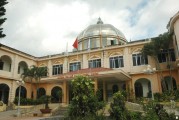Côn Sơn-Kiếp Bạc a model of conservation
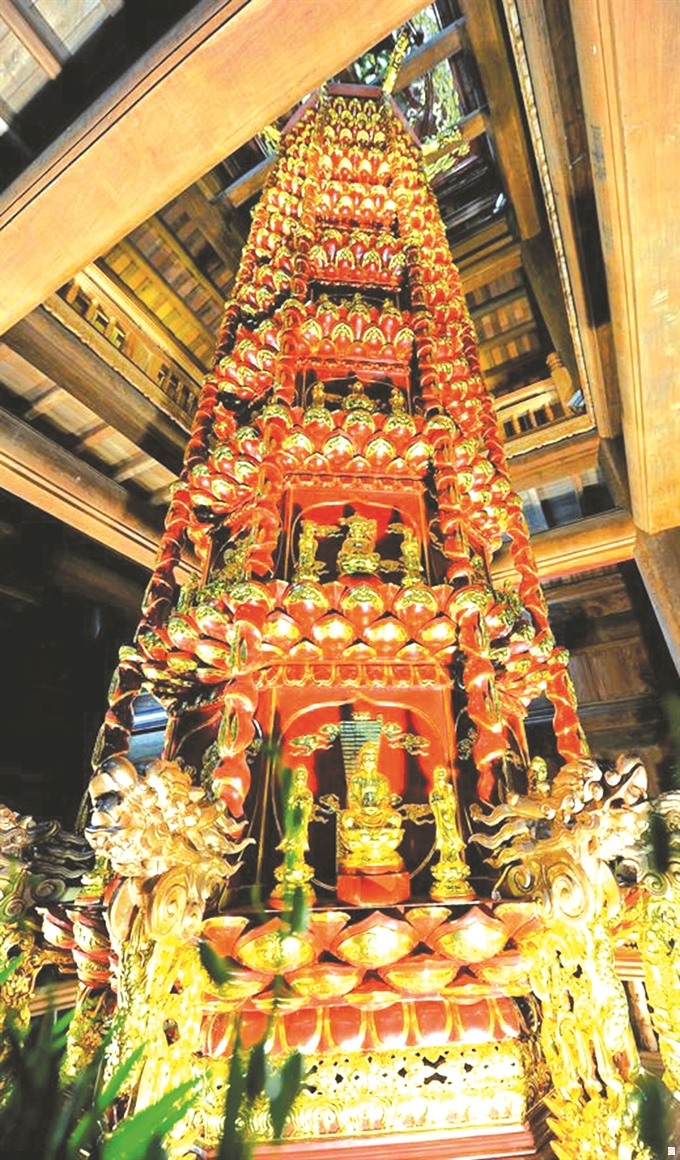
(Côn Sơn’s streams are babbling/ As music from a stringed instrument)
The beauty and serenity evoked in this line from 15th-century poet Nguyễn Trãi’s Côn Sơn Ca (Côn Sơn Ballad) still come to mind when visiting the Côn Sơn-Kiếp Bạc Complex today.
The complex of pagodas and temples nestles amidst forested mountains in the Côn Sơn area’s Chí Linh District, Hải Dương Province.
The most prominent structures in the complex are the Côn Sơn Pagoda and the Kiếp Bạc Temple, havens of peace and quiet, some 80 kilometres from central Hà Nội.
The sacredness of the pagoda, believed to have been built in the 13th century, is encapsulated in the famous saying: “Côn Sơn, Yên Tử, Quỳnh Lâm/ Nếu ai chưa đến thiền tâm chưa đành” (Those who haven’t been to Côn Sơn, Yên Tử and Quỳnh Lâm haven’t completed their pilgrimage).
Côn Sơn together with Yên Tử and Quỳnh Lâm pagodas, in Quảng Ninh Province, are three major centres of Trúc Lâm Zen Buddhism in Việt Nam.
All three founders of Trúc Lâm Zen – King Trần Nhân Tông, Venerable Pháp Loa and Venerable Huyền Quang – have been to the Con Son Pagoda to offer teachings on Buddhism, making it a major institution of learning under the Trần Dynasty (1225-1400).
About five kilometres from the Côn Sơn Pagoda stands the Kiếp Bạc Temple, dedicated to one of the most accomplished commanders in the nation’s history, Trần Hưng Đạo, who commanded the country’s armies to repel three Yuan-Mongol invasions in the 13th century. He is honoured as a saint in Việt Nam.
|
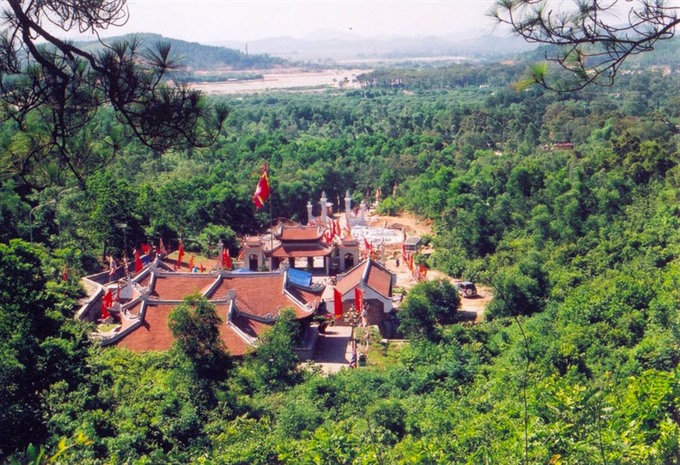 |
| Living vestige: Côn Sơn-Kiếp Bạc Complex exudes serenity. It was recognised as a special national relic in 2012. Photo thegioidisan.vn |
After the first victory over the invaders, Trần Hưng Đạo chose the Kiếp Bạc area as a military base. In 1285, he gathered more than 20,000 soldiers, more than 1,000 fighting ships and achieved the second victory here.
The temple was to honour the commander’s valour dedication in 1300. The structure was damaged during subsequent wars and the wear and tear of time. It was reconstructed in the late 19th century.
Archaeological excavations have affirmed that Kiếp Bạc used to be a military base in the 13th century that included temple dedicated to a living person, a sail workshop, rice barns, caves and ponds.
In a 2013 archaeological excavation at the Côn Sơn Pagoda, a diverse range of artefacts were found, including building materials (bricks, tiles, terracotta decorative items with different motifs); and porcelain (bowls, plates, vases) made in Việt Nam and China. Most of the artefacts belonged to the Trần Dynasty in the 14th century and the Lê Dynasty in the 17th century, confirming the pagoda’s importance as a Buddhist relic in Việt Nam under the two dynasties, according to the management board of the Côn Sơn-Kiếp Bạc relic.
The excavation also unearthed vestiges of a nine-storey lotus tower for the first time, providing a reliable foundation for reconstructing the tower in 2014.
Century old festivals
Every year, the complex hosts two major events – the Spring and Autumn festivals. The spring festival is held on the first lunar month, commemorating the death anniversary of Venerable Huyền Quang, one of the first three patriarchs of Trúc Lâm Zen Buddhism.
The autumn festival, which pays tribute to Trần Hưng Đạo is held on the the eighth lunar month.
The festivals feature a range of rituals including the floating of colourful lanterns, a water procession, a Buddhist ritual that prays for the nation’s peace and security. Thousands of Buddhists and other people participate in them.
Wrestling contests and bánh chưng (square sticky rice cake) making competitions, boat races, water puppetry performances and folk games are also organised.
The Côn Sơn-Kiếp Bạc complex was listed as a national relic in 1962 and as special national relic in 2012. The festival was recognised as a national intangible heritage in 2013.
The complex is among more than 3,400 national relics. Of these more than 1,000 are communal houses, nearly 800 pagodas and around 600 temples, according to the Institute for Conservation of Relics.
|
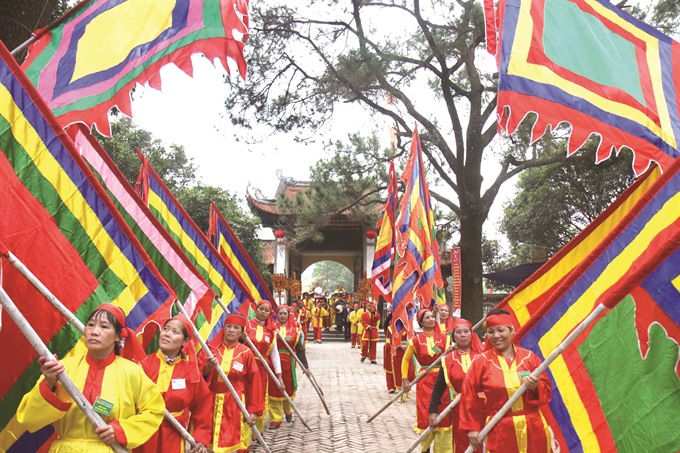 |
| Commemoration: Every year Côn Sơn-Kiếp Bạc complex hosts the Spring and Autumn Festival. One commemorates the death anniversary of Venerable Huyền Quang and the other pays tribute to Trần Hưng Đạo. VNA/VNS Photo Thanh Tung |
“There is hardly any religious relic where all the original elements are preserved till today. Meanwhile, to ensure conservation and continuation of its initial function (a place for religious practice), a relic must be in full and intact state. Thus, restoring the lost items of relics is an imperative, urgent task,” said Dr Hoàng Đạo Kính, an architect from Hà Nội who specialises in the restoration of heritage structures.
He said: “The increasing demand for relic restoration poses a big question – what are the factors and sources should we rely on to carry out conservation work?”
Science and tradition
The Cultural Heritage Law of Việt Nam regulates that "conservation of a relic must preserve the original elements of a structure as much as possible".
Researchers agreed at a conference last month that a scientific approach was needed to ensure the authenticity and integrity of a relic when attempts are made to conserve or reconstruct it. The conference, organised by the Institute for Conservation of Relics, focused in particular on the Côn Sơn-Kiếp Bạc complex.
“We need to preserve the value of the relic as well as the cultural message that our ancestors wanted to pass down to us. The pagodas and temples serve as vehicles transporting the historical memory and cultural message to the present,” said Đặng Văn Bài, vice chairman of the National Heritage Council.
Backing him, history professor Trần Lâm Biền, who has 60 years of experience in conservation, added: “Every element in a Buddhist structure has its own meaning. Therefore, conservation of relics must be done in consultation with scientists and researchers. We can do good conservation work only with profound understanding of the relic.”
|
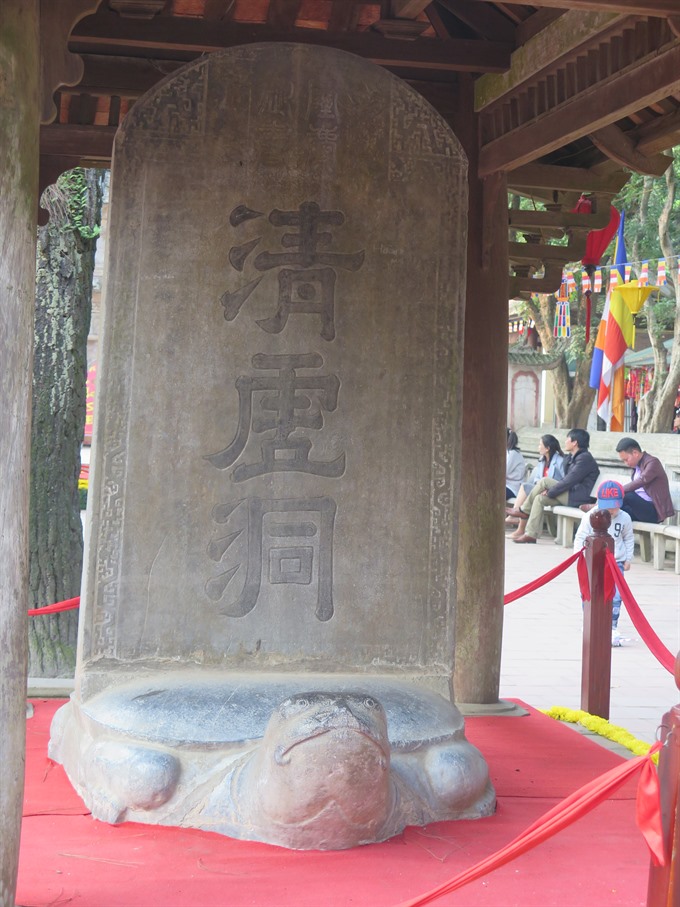 |
| Marker: A 14th century stele in the Côn Sơn pagoda was listed as national treasure in 2015. It is among very few Trần Dynasty artefacts that exist today. VNS Photo Hồng Vân |
Elaborating on this, Lưu Trần Tiêu, chairman of National Cultural Heritage Council, said: “Each historical and cultural relic is a witness to development stages in the nation’s history, on which historical, cultural and aesthetic values are imprinted. Therefore, the most significant requirement of conservation work is to preserve the relic’s historical and cultural authenticity.
“Original elements can be preserved for a long term by various techniques including preventing termite damage, periodic maintenance, upgrading (reinforcing, mending, adjacenting); repairing damaged elements or replacing them with new ones based on research and comparison with existing features of the relic or comparison with other architectural relics of the same age in the neighbourhood.
“In case the relic has deteriorated seriously, a dismantlement plan (recording, numbering, drawing, photographing the elements) is necessary. After maintenance work is conducted, the structure must be reassembled in a precise manner.
“Reconstruction is justified only in exceptional circumstances and then it must be done based on scientific documents,” said Tiêu.
Scientific documentation includes writings about the relic, its foundation; the decorative architectural artifacts found during excavation; and photographs of the relic before it was damaged.
|
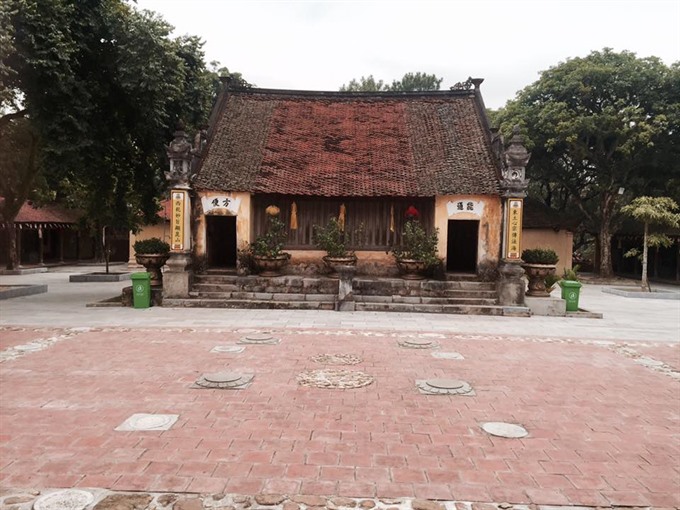 |
| Marked: The foundation of the original nine storeyed lotus pond can be seen in the yard of the Côn Sơn pagoda. VNS Photo Hồng Vân |
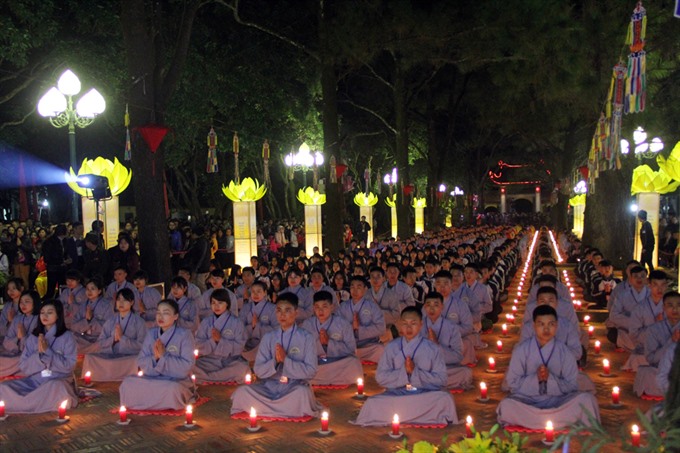 |
| Prayerful: A ritual prayer for peace in the country is held during the spring festival at the Côn Sơn pagoda. VNA/VNS Photo Mạnh Minh |
Model work
Since 2010, Hải Dương has carried out several conservation projects, including that of the Kiếp Bạc Temple, reconstructing the nine-storey lotus tower and maintaning some compartments as well as the bell tower of the Côn Sơn Pagoda.
The restoration of the tower and conservation of other elements in the Côn Sơn Pagoda were done after intensive and extensive study of historical documents and existing architectural peers in the region, said Nguyễn Khắc Minh, head of the Côn Sơn-Kiếp Bạc Relic Management Board.
Last year, the nine-storey tower was inaugurated during the Côn Sơn-Kiếp Bạc festival. The original tower was built by Venerable Huyền Quang during the reign of the Trần dynasty and lost after the Lê dynasty took power.
The tower, which symbolises nirvana, the state of enlightenment that Amitabha inhabits, has a statue of Amitabha on the top floor and more than 200 other Buddha statues.
“The Côn Sơn-Kiếp Bạc Complex can be considered as a model for how we should treat our relics,” Bài said.
It’s only two months till the 2018 spring festival opens (the 16th day of the first lunar month), and the complex will welcome thousands of visitors and Buddhists from all over the country.
Locals are the most excited, of course.
Hoàng Thị Mai, a native of Chí Linh District, said: “The festival season is always an important and fun time of the year for us. I am proud that I will play a role in the water procession.” VNS
© Chí Linh quê tôi tổng hợp và sắp xếp các thông tin tự động bởi chương trình máy tính với sự hỗ trợ của Google Alerts, Skydoor & Baomoi. Tiêu đề và nội dung một số bài viết được Chí Linh quê tôi biên tập cho phù hợp. Link bài viết gốc được đính kèm dạng URL ở phần tác giả cuối mỗi bài viết.
Chí Linh quê tôi do Hội Người Chí Linh tại Đài Loan phát triển và quản lý. Phản hồi, đóng góp thông tin qua email: [email protected]
Những tin mới hơn
Những tin cũ hơn
-
Nhiệt điện Phả Lại báo lãi quý III tăng 18% lên 193 tỷ đồng nhờ tiết giảm chi phí

-
Nhà máy điện "ở trong rừng"
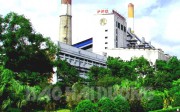
-
Dư nợ Agribank Chi nhánh Hải Dương II đạt gần 5.000 tỷ đồng

-
Constrexim - HOD: Tiên phong xây dựng đô thị Chí Linh

-
BIDV Bắc Hải Dương: Dư nợ cho vay tăng gần 6%

-
Công ty CP Nhiệt điện Phả Lại: Trên 90% lượng tro, xỉ được tiêu thụ

-
Việt Tiên Sơn Địa Ốc chào bán 17,5 triệu cổ phiếu
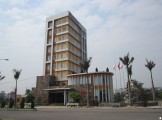
-
Công ty Cổ phần Trúc Thôn đầu tư dây chuyền sản xuất gạch ốp lát cao cấp
